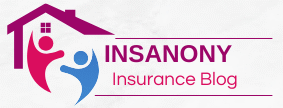Homeowners insurance provides protection for both the building itself and any belongings inside. Mortgage lenders usually require homeowners to have coverage.
Homeowner’s policies typically consist of two parts. First is the declarations page that summarizes key features of coverage; and secondly is the policy jacket which provides more in-depth policy language and exclusions.
Property Coverage
Mortgage lenders require homeowners to carry home insurance, and it is wise to do the same. Owning a home can be an impressive financial milestone but with it comes significant financial responsibilities and expenses such as replacing damaged or stolen properties in case they become damaged beyond repair. A typical homeowners policy typically provides coverage for dwelling, other structures and personal belongings.
Dwelling insurance covers repairs or rebuilds to your house, garage and any attached structures such as porches or decks. A standard policy also covers your contents such as furniture and appliances up to 50% of the dwelling coverage amount (though additional premium may be charged if higher coverage limits are desired). Be sure to carefully review your policy’s limits so you understand exactly how much coverage exists in each policy.
Other structures coverage provides protection for structures not connected directly to your house, like sheds or fences. A standard homeowner’s policy typically also provides personal property coverage – usually up to 50% of dwelling coverage amount but after paying a deductible – covering belongings such as clothing and electronics up to a limit of 50% of dwelling coverage amount; personal property floaters may extend this limit further with full value coverage of certain items such as jewelry.
Liability coverage is another component of a home policy that helps cover defense costs and damages when someone on your property suffers an injury due to your actions, typically up to $100,000 for most policies; you can extend that coverage by adding an umbrella policy afterward; adding one can often reduce homeowners insurance rates as well.
Liability Coverage
Homeowners insurance policies come in different varieties or policy forms, each offering more extensive coverage. But all policies typically contain similar components:
Property Coverage
Home insurance provides coverage to repair or rebuild your home and belongings after it has been damaged by covered perils such as fire, storms or other disasters listed in your policy. This covers costs associated with debris removal; restoring essential services like electricity, water and heat; as well as any additional living expenses you incur while your house is repaired or rebuilt.
Most policies also offer personal property coverage that extends beyond your dwelling, protecting items you wear or carry with you, furniture and appliances as well as electronics used for work or play. Personal property limits typically represent a percentage of dwelling coverage limits; additional coverage can often be purchased. Scheduled personal property floaters offer more comprehensive protection.
Liability Coverage
Home insurance liability coverage will provide support in the event that someone on your property becomes injured; covering legal costs and medical bills up to your policy’s limit (most policies set a maximum limit on liability coverage).
Homeowners policies often offer optional earthquake, wind and hail deductibles that are separate from their standard property deductible. These deductibles tend to be higher so should be carefully considered when purchasing home insurance coverage.
Your homeowners insurance premium depends on the coverage options included in your policy, with various factors like likelihood that a claim will be filed, crime rates in your neighborhood and building material availability all playing an integral role in determining rates. Your risk profile – comprising information such as past claims history, home security features installed, credit score and neighborhood conditions – also plays a part in setting this amount.
Additional Living Expenses
Homeowners insurance loss of use coverage, also referred to as Additional Living Expenses (ALE), covers the additional expenses of moving and living elsewhere if your house becomes inhabitable due to damage from covered perils. ALE typically covers hotel/rental fees, storage fees, pet boarding services and meals while you’re temporarily relocated. Most policies automatically include some coverage but it may be possible for you to increase it.
Loss of use (ALE) coverage can typically be found under the “loss of use” section of a homeowners policy and typically covers a percentage of dwelling coverage limits. To be eligible for this coverage depends on how severe your damage is and whether your insurer deems your home uninhabitable after experiencing a disaster that qualifies as coverage.
Example of ALE coverage would include the burst of a pipe on a frigid winter night and subsequent flood of water flooding your kitchen and dining room. Dwelling coverage would cover damage to built-in items such as cabinets while personal property coverage would pay for any damaged furniture; but you would still incur costs associated with staying at a hotel while repairs are completed as well as eating out while your kitchen remains out of service.
Numerous factors affect homeowners insurance premiums, such as home age, location, construction materials, deductible and credit. But risk to file a claim remains the most critical element. Understanding your risk and speaking to your agent about protecting against various risks is paramount to managing premium costs effectively. You could reduce premiums by increasing deductible or improving home security features; just be sure that these improvements are adequately covered – they may suggest additional riders for valuables or items you wish to insure.




